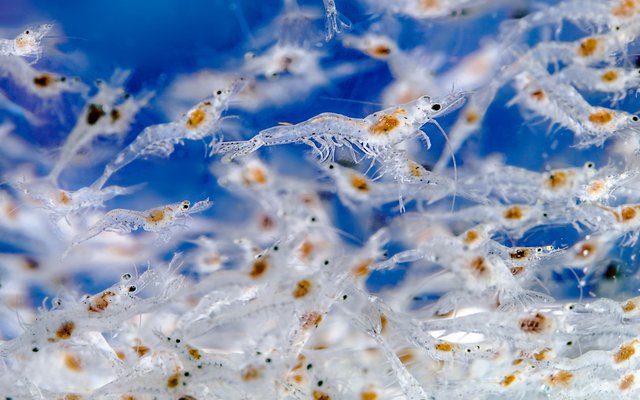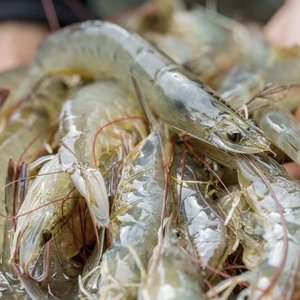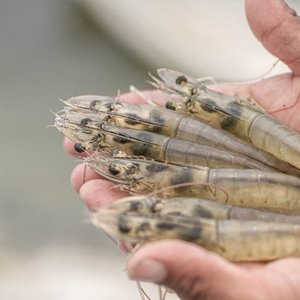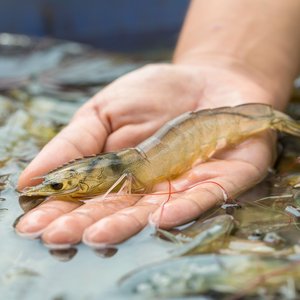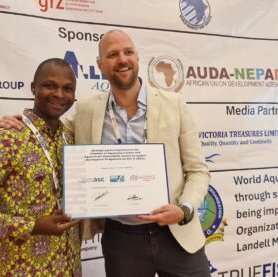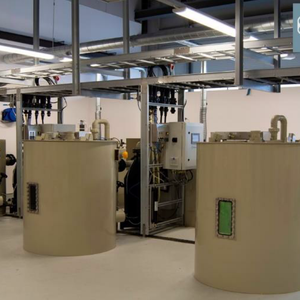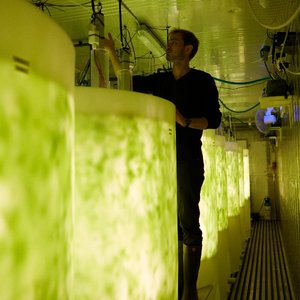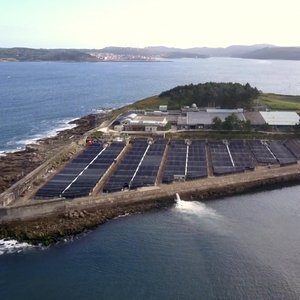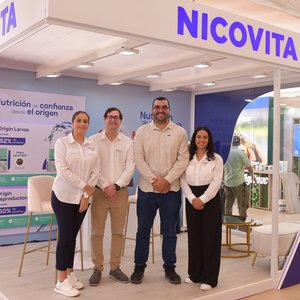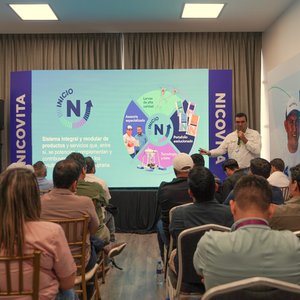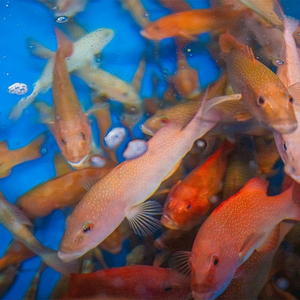Fast growth with good resistance to common diseases are among the desirable qualities of any animal farmer and so it does for shrimp farmers. Over the past few years, shrimp genetics suppliers have been developing different strains adapted to different farming contexts and regions.
“The most selected trait for regions affected by diseases is resistance to those diseases, but in regions where there are no major diseases or with closed systems with biosecurity, growth is the most selected trait. In any case, you will need a little of the other. More mature productions are now looking for robustness – the ability to resist changes in the environment and challenge by pathogens – and feed conversion ration, a very important trait now that feed has increased the price,” said Marcos De Donato, breeding scientist at the Center for Aquaculture Technologies.
“Survival is the primary driver – a dead shrimp can never grow fast – and it is a function of disease and tolerance to that specific viral disease or toxin. The secondary driver, but also very important in today’s culture, is the growth rate. When shrimp stay healthy, the growth rate determines the cost of production – the number of days in a cycle and the number of cycles a farmer can accomplish. Unfortunately, the growth rate is correlated with robustness. I am not sure robustness is a truly selected trait or the indirect consequences of shrimp that grow faster, consume more feed and apply more pressure to the pond environment,” said Robins McIntosh, executive vice president, Charoen Pokphand Foods (CPF) Public Company.
Traits and regions
Shrimp traits have to be adapted to the farming model and farming conditions. “In some markets, fast growth lines perform very well while in other markets balanced or robust lines are the best performers,” said Olivier Decamp, group technical director at Grobest.
White spot syndrome severely hurt the shrimp industry in Ecuador in the early 2000s. “Since that time, the country has focused on raising disease-tolerant shrimp rather than shrimp free of specified pathogens (SPF). Farmers have actively selected the shrimp that survived the virus and were eventually able to grow shrimp that showed tolerance to the disease,” said Angel Gomez, managing director Cargill Aqua Nutrition Latam North.
Ecuador relies on its own local strains that are APE-based and specifically WSSV-resistant strains. “Recently, the dynamics are changing. Where the disease is low, PL producers will go for fast-growing strains, and a growing majority of the market choose balanced lines which best fit the scenario where the animals can still fight disease and survive but grow normally, typically faster than APE lines,” said Ramir Lee, regional technical manager, Zeigler Bros., Inc.
“In Latin America, we are seeing an increased understanding and focus on the importance of health and selection of healthy broodstock using our knowledge and technology to combine with genetic selection. Genetically robust animals that are also free of pathogens are the broodstock of choice currently throughout Latin America,” said Melony Sellars, CEO and managing director, Genics.
“Growth is by far the most demanded trait desired by farmers in Ecuador, followed by survival and disease-specific resistance. In the future, these traits could be separated by performance at high and low salinity areas in Ecuador,” said David Danson, director of operations and shrimp at Hendrix Genetics.
How about Asia? “The breeding goals are roughly the same in Asia though we do see developments towards higher densities and more controlled production which also seem to require a different type of shrimp,” said Danson.
“Traits-wise, in Asia and from pre-COVID, most farmers in India, Vietnam and Indonesia aim for fast-growing lines. Vietnam on the other hand, is dominated by two large companies with their own genetic programs. China, however, is different being an all-pathogen-exposed country, where many emerging diseases originate, and prefers lines with maximum resistance traits often from APE or all-pathogen-exposed breeding programs. Throughout Asia, lines with balance resistance and growth traits are still popular,” Lee said.
With a potential shrimp farming industry in Europe, there might be an opportunity for developing other specific traits. “European RAS farmers are benefiting from their highly biosecure indoor conditions and production with SPF high-performance animals. As European farmers access these genetics in an ongoing fashion, they are optimizing their systems for these genetics,” said Sellars.
Which is the best option?
“Shrimp farmers’ focus has tended to be broadly split into two different alternatives: fast growth or more robust shrimp. Recently, the focus has swung more in favor of survival over growth, and you can’t beat the math on that. Survival always wins,” said Eamonn O’Brien, global product manager LifeStart at Skretting. “We should strive as an industry to have both and ensure we respect all pond parameters at an optimal level for its carrying capacity. We should discourage a silver bullet mindset and encourage best practices in farming that will ensure both growth and survival.”
“There are pros and cons with all these strains in terms of performance under different commercial conditions. Without a doubt, currently, there is demand globally – where shrimp are grown in ponds – for robust shrimp genetics, however, farmers also want them to grow and perform well like the Asian SPF strains. Getting the best of both worlds is complex, and not necessarily what happens under commercial production,” Sellars said.
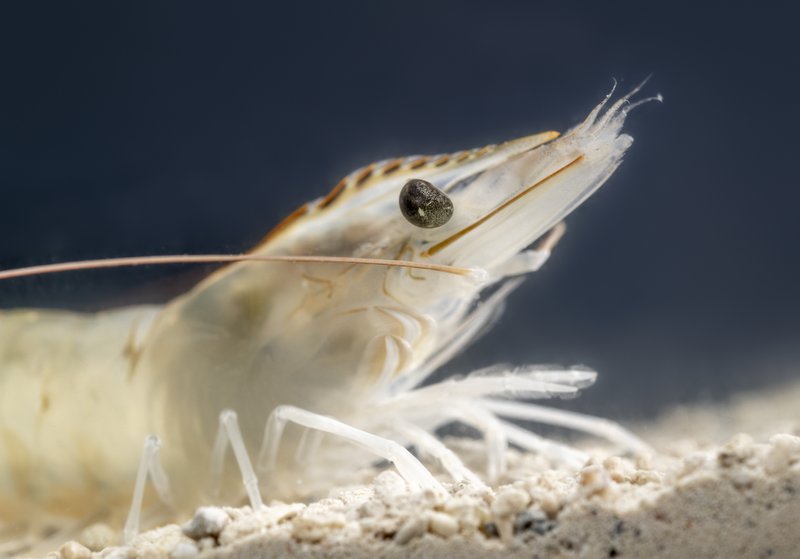
Credits: Skretting
Biosecurity at the hatchery
Many broodstock and PL suppliers deliver SPF shrimp that lose this status when entering shrimp farms. Despite not being an issue in Ecuador due to its disease-tolerant strategy, it is different in Asia where the shorter cycles and intense management can handle with SPF PL or something that comes closer to it.
“Greater control over the broodstock and PL supply chain is necessary in some countries. Rearing and selling non-SPF pond-selected broodstock is common in many shrimp-farming countries in Asia, which can lead to the proliferation of pathogens and disease from farm to farm,” said Jeffrey Prochaska, breeding scientist at the Center for Aquaculture Technologies.
The certification of the broodstock at the time of shipping should be negative for WOAH (World Organization for Animal Health, previous OIE) listed diseases. “Farmers rely on certificates provided by hatcheries and/or government agencies. In addition, some of them may send PL samples to external labs for confirmation of the SPF status. But practical and financial constraints will restrict this practice. Farmers will benefit from an improved validation of the PL quality,” Decamp said.
“Each individual brood animal must be tested for the entire range of known pathogens regardless of WOAH status and for any new pathogens that could be present. WOAH needs to reorganize its aquaculture oversight and be given stronger tools to deal with those countries that do not comply with notification,” said Stephen Newman, CEO at Aquaintech Inc.
“Measures such as stronger country-wide regulations, regular monitoring and testing for diseases, effective disinfection procedures, and strict control of inputs and outputs can help reduce the risk of disease outbreaks in shrimp farms,” said Gomez.
Hatcheries need to find ways to improve their biosecurity by addressing all the possible disease vectors including the use of live feeds, filtration, employees and disinfection practices. Biosecurity breaches still occur through aquafeeds. “Many PL suppliers are using SPF broodstock but feed them on locally sourced fresh feeds, such as blood worms, clams, crab and Artemia biomass. There is little doubt that this practice represents a risk to the industry. Many pathogens and parasites are directly transferred to the nauplii and develop through hatchery rearing,” O’Brien said. “Water quality at all stages is also of critical importance. Correct disinfection of water before use, correct microbial conditioning and maintaining a clean pond ecosystem are critical for success. These are typically capital-intensive improvements and require skilled and informed operations procedures.”
“A focus on education around biosecurity would be highly beneficial to our global shrimp industry. Biosecurity comes in many forms and is simply about reducing the risk of a pathogen coming into a system and causing production loss. Many farmers think of biosecurity as closed sheds and highly technical water treatment. This is not the case. Biosecurity is a personalized farm solution to risk management and takes many forms. As an example, the simplest of broodstock centers can take in pathogen-free animals and reduce the risk of these animals being exposed to pathogens simply by not sharing nets with other tanks, having a freshwater or chlorine net bath, introducing risk zoning on their site (low-risk areas and high-risk areas) and operating in a low- to high-risk fashion, only accepting people on site that have not been on other farms within the prior 72-hours, etc. There are many of these simple but very effective methods that will go towards reducing the risk of pathogen-free broodstock and post-larvae being exposed to pathogens, and they all contribute towards farm biosecurity,” Sellars said.
Other challenges and trends
McIntosh highlights that a large issue is the growing trend of piracy of developed stocks. “It is getting impossible to justify continued investment and development when millions of dollars of work can be stolen with no legal or ethical considerations. It is very detrimental as those companies whose stocks are pirated are the very companies that have driven the shrimp industry through that investment.”
“The mixing and piracy of stocks is widespread, common and practiced all around the world. Famers and/or hatcheries who believe they are buying one type of brand of shrimp or shrimp genetics have no idea what they are actually getting. This behavior is very detrimental to our industry, as unscrupulous companies do not do any real genetic work and simply copy what other companies offer. The level of inbreeding or final performance of these stocks is not consistent at all,” said Robin Pearl, CEO of American Penaeid. “We introduced a simple tool that allows farmers to take some samples of their PLs or farmed shrimp that they can send to our lab for analysis, where we can confirm exactly what animal they stocked, and to know whether it was a genuine API or not.”
A trend that was seen recently is some genetic companies, together with local partners, setting up biosecure broodstock multiplication centers. Hendrix Genetics is one of these breeders. “The obvious advantage is the improvements in animal welfare, transportation costs and higher predictability of supply. The disadvantages are the more complex local-partner relations and management than having everything completely in-house. However, with good partners – as per our own model – you can be successful. Locally reared broodstock are better prepared for local conditions, allowing for a better feedback loop in the genetic program,” Danson said.
In terms of demand, it is expected to still be strong for strains specific to disease resistance, but they must meet minimal growth expectations as well, Lee said. But what will the future bring in terms of genetic improvement of shrimp? “Given the availability of the lines of genetically improved animals that are available and have been for a decade, it is improbable that these will result in animals that outgrow what is already available. There are limits in terms of how much feed can be fed in addition to animal physiological constraints. A gram or more a day of growth is likely at or above this limit. Shrimp growing this fast eat all the time,” said Newman.
“As for producing disease tolerant and/or resistant animals through genetic engineering or even conventional selection techniques, exclusion of pathogens makes much more sense economically and for the long-term health and sustainability of the industry. Creating an environment where animals are protected against specific pathogens and no efforts are made to ensure pathogen exclusion ensures a never-ending source of disease. The industry has not evolved enough to appreciate that pathogen exclusion is essential for sustainability,” Newman stated.
Shrimp prices are expected to continue to decline, because of higher production, which will force producers to improve efficiency and reduce costs. “This will consolidate the producers and providers of genetic lines, reducing the number for larger companies that are more efficient and can reduce cost on a larger scale,” De Donato concluded.
Don't miss the previous articles in this series:
A look at salmon farming: Genetics, disease resistance and RAS


